|
Back to the Directory
The Society 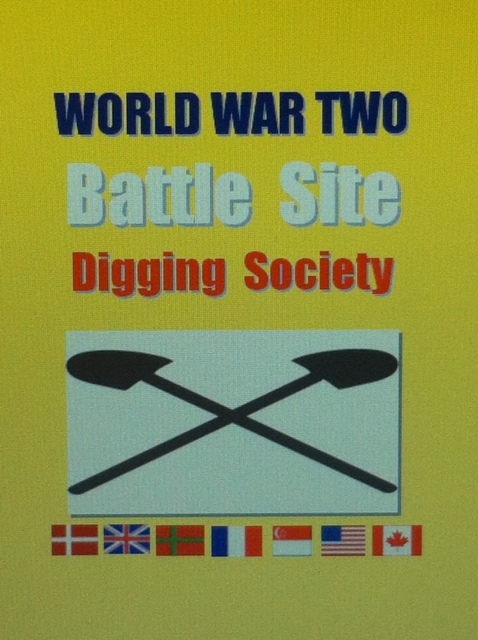
A growing number of private and professional entusiasts are dedicated a substantial part of their time searching for traces linking back to our World War Two history. Accross the globe remains are captured in the soil just below the surface, waiting to be found and brought to the surface after careful excarvation.
The "Society", including a number of WW2 entusiasts, have a great interest in this particular search for the history and are collecting reports and in fact also do diggings them selves on the historical locations collecting the historical relics.
______________________________________________________________________________________________________________________________________
Diggings in Normandy
WW2 Battle Site Digging Society searching in the French soil
By Erik Christiansen / Kim Frost Fuglsang
At the heart of Normandy, close to the historic beaches, lives one of our members, Erik Kristiansen, a retired Danish Policeman. Besides being a passionate owner of an old GMC and great collector of equipment from WW2, he also deals with the excavation of historical effects on the many historical sites in Normandy. Erik and his wife have chosen to live in a nice house in quite centrally part of the area where U.S. 101 airborne units, known from the world famous TV Series, “Band of Brothers” were dropped in June 1944. We see many signs of the violent acts of war throughout the region, if you know which signs to look for.
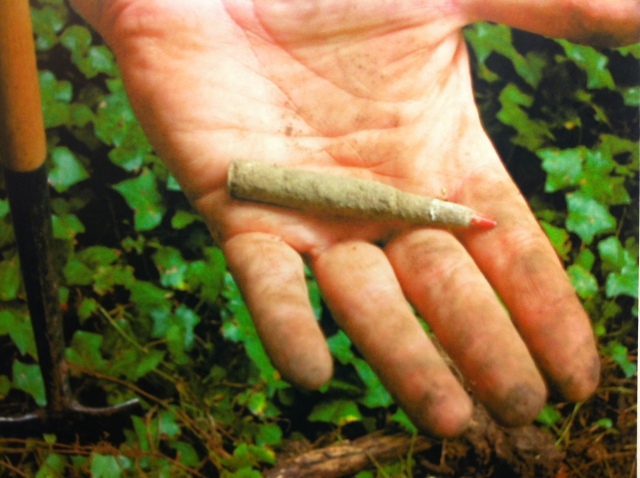
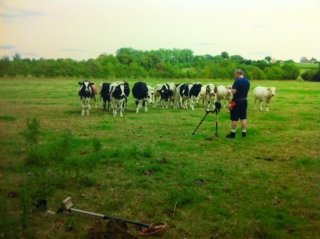 Erik's keen interest started with a visit by a former English police colleague David Mayes, who had taken his metal detector, or minesweeper as we like to call it, with him to Normandy to create a little search on a neighboring field. After the first few discoveries, Erik got totally inspired and subsequently bought his own "minesweeper" and has since been active on his own property and surrounding land and has progressively built up a good relationship with many local farmers and landowners who now accepts Erik as an honest and decent man, and not one of those, unfortunately, many careless "treasure hunters". Erik's keen interest started with a visit by a former English police colleague David Mayes, who had taken his metal detector, or minesweeper as we like to call it, with him to Normandy to create a little search on a neighboring field. After the first few discoveries, Erik got totally inspired and subsequently bought his own "minesweeper" and has since been active on his own property and surrounding land and has progressively built up a good relationship with many local farmers and landowners who now accepts Erik as an honest and decent man, and not one of those, unfortunately, many careless "treasure hunters".
It is thus that there are a few basic rules that one must and should follow when you want to embark in search for ancient historical effects hiding in the soil:
- ALWAYS ask for permission from the landowner Before scans or digging in a field!
- ALWAYS put back the area to the same condition as it looked before you started with your excavations!
- Upon discovery of any shells or other larger munitions, contact the police so that they can remove the effects appropriately.
- And then the unofficial rule among the more experienced collectors: do not flaunt your finding places, both to protect your good spots against the careless "treasure hunters" who do not always follow good practice, but also in respect to the local landowners who do not want all sorts of strange "treasure hunters" running around among living animals and plants digging holes and leaving it looking like the landscape on the moon.
Erik´s good reputation has become so successful that the locals now even approach him when they have something they know he could use in his growing collection of items from WW2. This was the case when he was allowed to pick a part from one wing to either a Mustang or a Typhoon fighter which had been lying in a hedge since June 1944. The second part of the wing was at home at the farmer's property. Erik got both parts and have now compiled them on his displays.
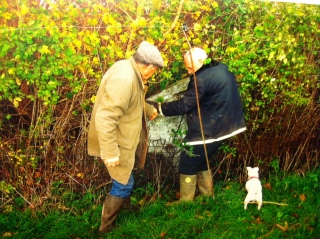
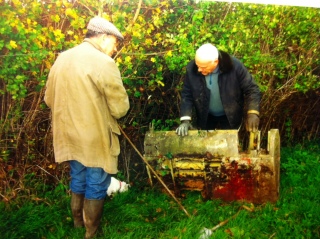
The same farmer showed Erik where he had found German ammunition, 50 cartridges to be precise, left in the field under the water container for the cows. Erik was also given a German 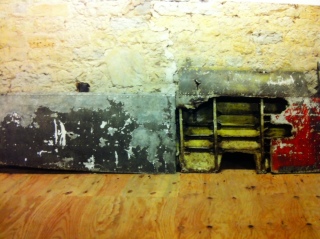 bayonet, that had been hidden inside a double wall in his henhouse. Thus, teeming with discoveries in the whole area and for local, this has been a natural part of their and their family's lives since 1944, for us it is exciting to find relics from a bygone era and as if they could talk, they probably had some interesting stories to tell. bayonet, that had been hidden inside a double wall in his henhouse. Thus, teeming with discoveries in the whole area and for local, this has been a natural part of their and their family's lives since 1944, for us it is exciting to find relics from a bygone era and as if they could talk, they probably had some interesting stories to tell.
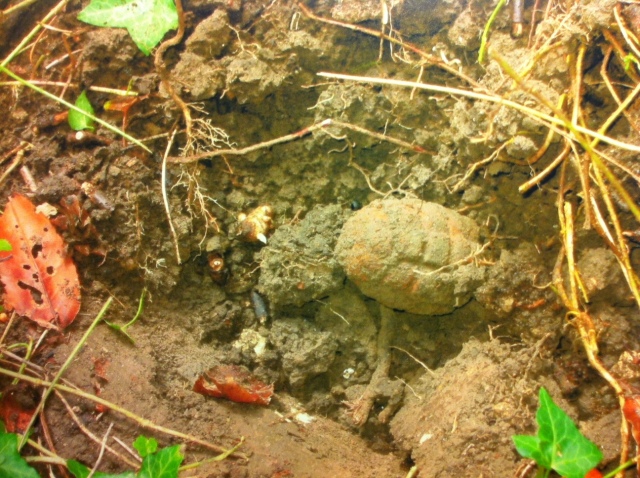
Erik has made many exciting discoveries in the soil of Normandy. Among other things, he has found an U.S. hand grenade (pineapple) 10 cm below the surface in a flowerbed. The pin was pulled out, so the local police were immediately called in, so it could be removed properly.
Erik has also made some excavations in one of the U.S. field hospitals near his property. The finds have been many and include a lot of surgical equipment, glass ampoules, bottles, eating utensils, etc. In any of the found medicine bottles there are still content in. It is obvious that the normal approach of waste, including personal military equipment on these field hospitals was to dig a hole and dump it all and then cover. Today we have the pleasure and excitement of doing the discovery that include both gas masks, helmets, both with and without bullet holes, parachute fabric, remnants of boots, drinking mugs, plates, cutlery and a host of "crickets", parachute buckles, etc.
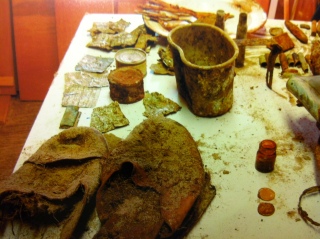
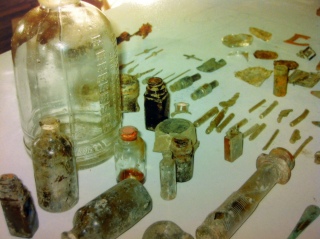
One of the more remarkable findings was the remains of a Mauser (Below left) where all the wood was gone over the years in the soil, but the rusty metal parts were still left in the soil rolled into an American parachute fabric? What has happened? Could it have been an American GI who had planned to come back and find his booty, but never got the opportunity and the gun consequently was left to rust in the soil and just waiting to be found.
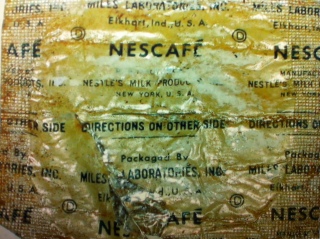
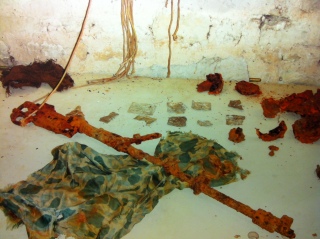
Some of Eric's findings also include some empty packaging for Nescafe sachets (above right), from the battle grounds. "Always good with a cup of Joe between facing the enemy".
One find that Erik did in the area of the field hospital was 2 Dog Tags (below). The one in the old version with detailed information, which the US quickly abandoned when it turned out that the Germans, after capturing American GIs contacted the family back in the U.S. and filled them with propaganda and false information in an attempt to create a resistance from the public against the war. The second Dog Tag was in the newer style with just the name and rank. It took Erik a little time to code the name and number and based on Eric's research, turned out that both soldiers after a visit to the field hospital, surely after being wounded, survived the war but obviously left their dog tag in the waste hole at the field hospital.
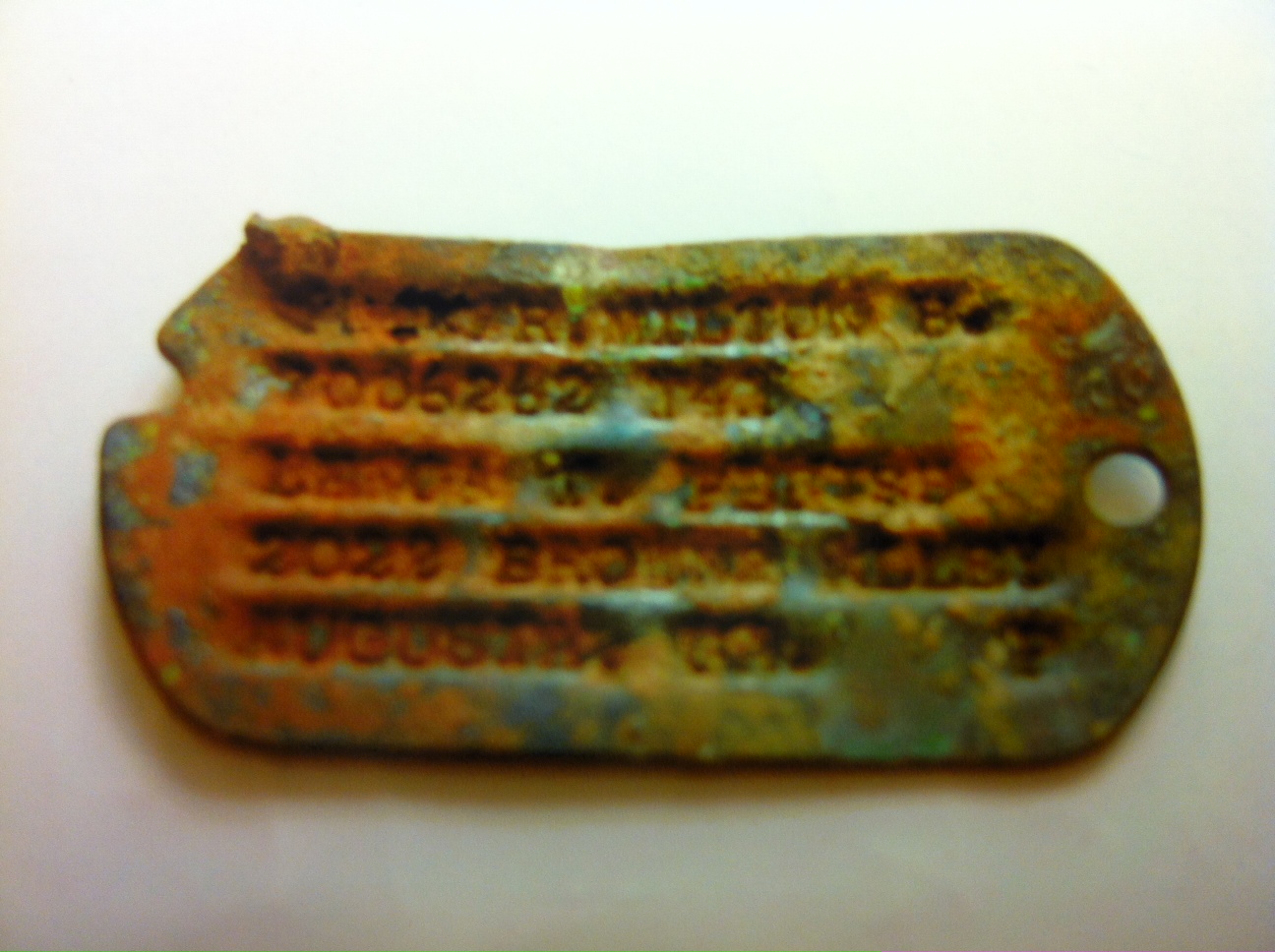
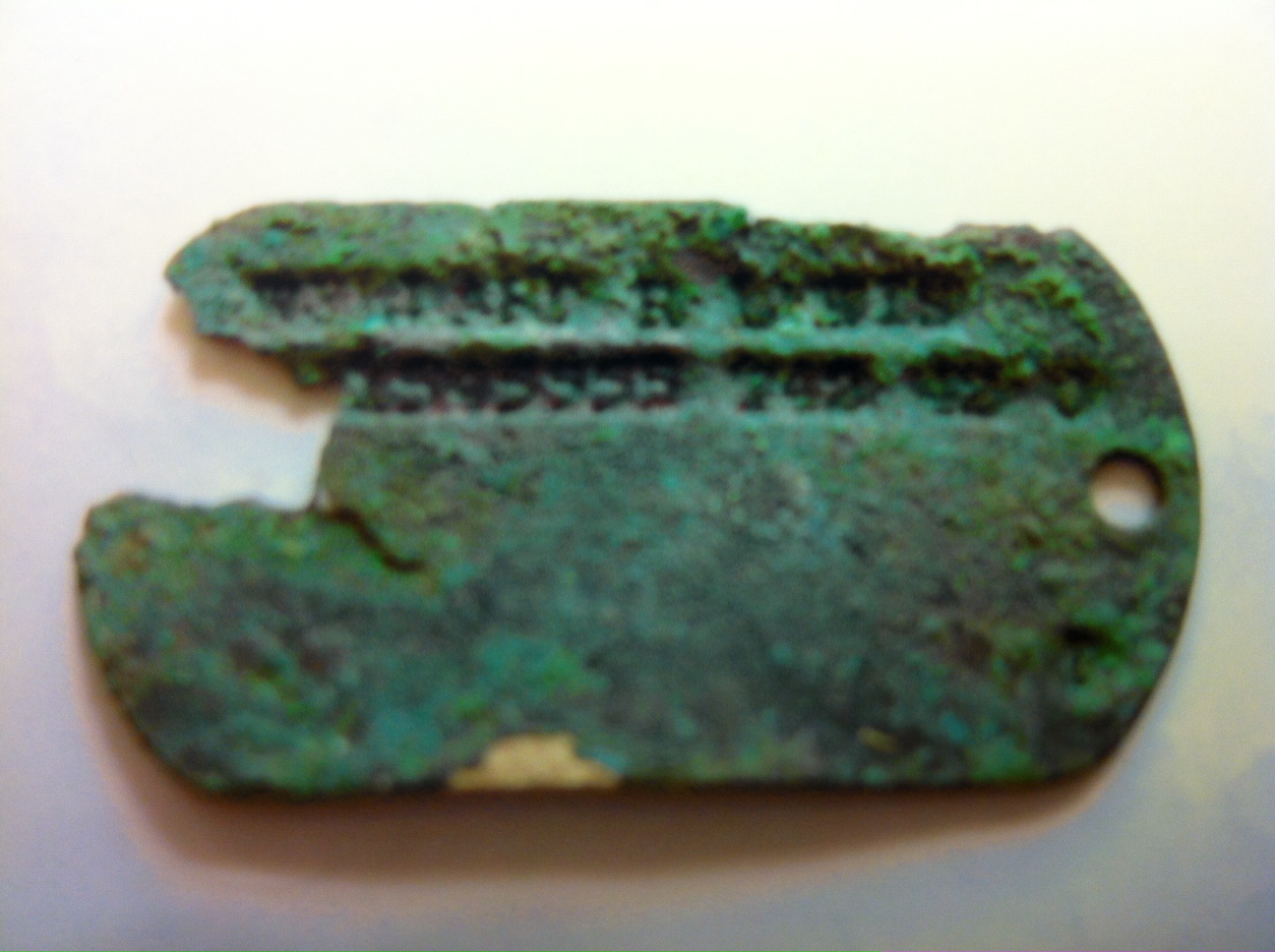
Left Dog Tag (above) says: Tucker, Milton. B, 7006262 T41, Lenoa T. Perish, 2022 Browns Alley, Augusta GA. P
The right Dog Tag, the newer version, only says: Willard R. Lewis, 1545555 T42 42 O, P
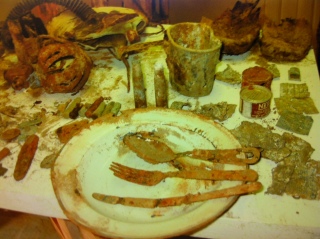
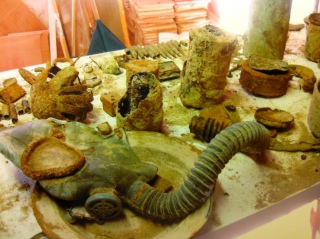
Above a Gasmaske, a German "Egg Granate" that seems to have blown up in the sand, cutlery, plate from the Canteen at UTAH Beach. Note the NesCafe tin in the right picture and how well the sand has preserved it.
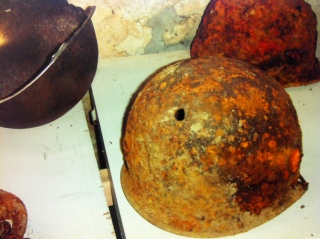
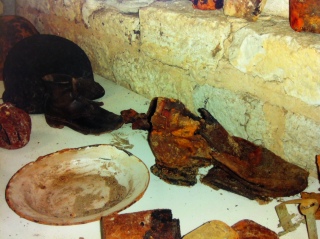
Above can be seen another US boot and a emal plate from the field hospital as well as holders for drinking cans. The only appropriate text for the photo at the right would be: "Bad Luck".
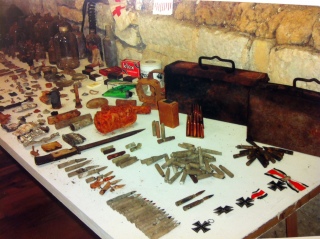
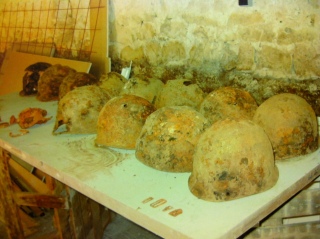
Above to the left, all the equipment and accessories from the Field Hospital is displayed. To the right are the German bayonet, ammunition and some German tool boxes. Below to the left are some of the many helmets that were left at the dump, 50 cm down below the surface.
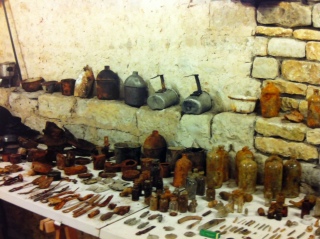

In the photo to right, can be seen parachute fabric, buckles and lines as well as some of the famous crickets. Furthermore medication tubes with needles also from the Field Hospital.
A new season is waiting ahead and Erik are preparing for a new season. Several areas have already been selected and agreements have been made with the landowners that will allow Erik to make his search on their land. I wonder what the 2012 season offers? Stay tuned on this website.. more to follow..
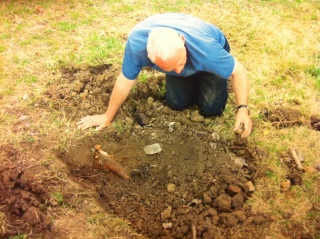
On the photo to the right, Erik can be seen diggin in the field around the Field Hospital. As it can be seen, he has found some medication glass bottles only 20-25 cm below the surface.
|